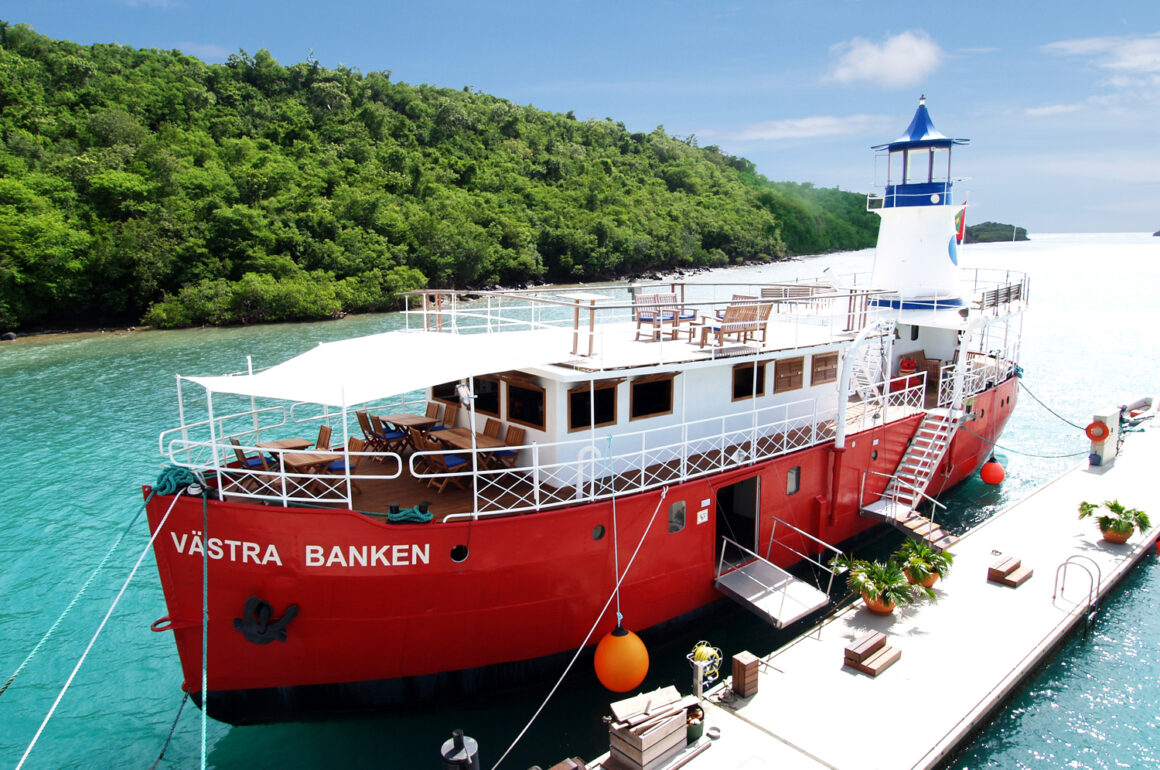
“What? Are you crazy? Don’t do that.”
“DON’T DO THAT.”
This was the broker’s advice to Dieter Burkhalter when he said he wanted to buy an old decommissioned lightship and move it to the Caribbean.
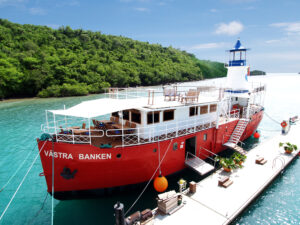
The Västra Banken, a former lightship from Sweden, at its new home in Grenada
Dieter and his wife Jana had bought land in Grenada with plans to open a marina, restaurant, and boutique hotel, and they were looking for a symbol – something unique to make their resort stand out.
Dieter surfed the internet and stumbled on a Swedish lightship that was for sale. Seeing the lightship, Dieter thought she would be perfect – not too big, but spacious and charming. After telling Dieter he was crazy, the broker continued to dissuade him, saying it would be too hard to transport the lightship. Dieter was undeterred.
The broker sighed, “What do you want to pay?” Dieter closed the deal, and the adventure of refurbishing and transporting the lightship began.
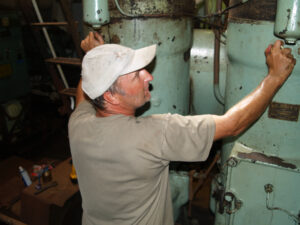
Dieter Burkhalter starting the lightship’s engine.
The lightship’s name is Västra Banken #23. Västra Banken means “the west bank,” and she was the 23rd of 37 lightships that Sweden built and deployed along Sweden’s coastline. Completed in 1900, the lightship briefly served two locations before being stationed in the Baltic Sea just north of Stockholm in 1923. She served until 1970.
Lightships (also known as “fireships” in Northern Europe) are floating lighthouses used in places where it is not feasible to build a stationary lighthouse due to submerged reefs, sandbars, or treacherous harbors. Even though these lightships’ hulls were strong, the lightships were active only during the summer because of the dense ice floes that strained the anchor chains during the winter. Lightships anchored semi-permanently for six months from July to December and were towed to a safe harbor and stored until the next year. The ship’s engine was only run to stabilize the lightship during heavy storms. Shipping mostly ceased during the winter because the navigational channels iced over.
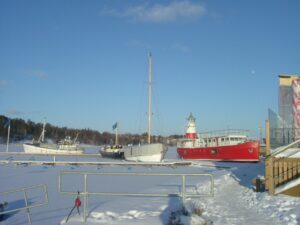
Dieter Burkhalter’s first view of the lightship.
The ship’s log shows that six men manned the lightship working in three rotating shifts – 8 hours at watch, 8 hours doing community service such as cleaning, cooking, or maintenance, and 8 hours off for personal time and sleeping.
Just imagine working in cramped quarters with no running water, heat, electricity, no communication with the outside world, and never leaving the ship for six months. The men were strong and resilient, manually completing all jobs, including managing the heavy anchor chains. In later years, generators relieved some of the most strenuous tasks, and the men could pursue hobbies in their spare time like fishing, birdwatching, and making crafts.
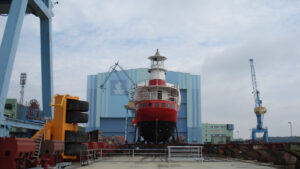
Preparing the lightship to be hoisted onto the freighter.
Sweden built a permanent lighthouse at Västra Banken in 1970, and they decommissioned the lightship. The town of Oregrund bought the lightship and installed her in the harbor. Maintenance was costly, so the town removed the superstructure, including the lantern tower, installed it at the harbor as a museum, and sold the rest of the ship as scrap. In 1999, a private owner bought the lightship and moved her to Stockholm as a houseboat. The new owner installed a similar lantern house from Lightship Trelleborgs Redd #21, in the ship’s stern.
Dieter bought the Västra Banken in 2005, and she began a trek by tugboat from Stockholm to Rostock, Germany. Rostock is a famous port city with deep expertise in ship rebuilding. Because the shipbuilding industry was in decline, it was much less expensive to haul and refurbish the lightship in Rostock than in other places.
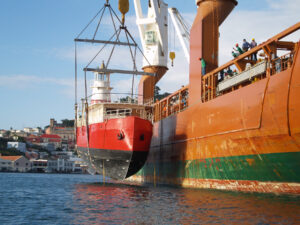
Lowering the lightship off the freighter
Besides using the lightship as a symbol for the resort/marina, Dieter wanted to use the ship as a restaurant and provide convenient bathrooms for the yachts anchored in his marina, to protect and preserve the pristine bay. Dieter identified the specifications to restore the lightship and design the interior space.
It took seven months to rebuild the lightship. First, they stripped the boat to the metal ribs and removed five tons of scrap. They then removed all the paint and rust and repainted the hull five times, using over one ton of paint. They welded ten tons of steel plates to strengthen the hull. Then they built the kitchen, the washrooms, and created sewage tanks.
Next was hauling the lightship onto a freighter to transport her to Grenada. Using old documentation, Dieter estimated the lightship’s weight to be approximately 110 tons. They used two cranes to load the lightship onto the cargo ship MV Schippersgracht.
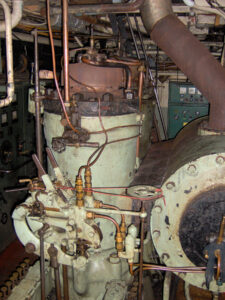
The engine room of the Västra Banken lightship
BEEP, BEEP, BEEP – each time they tried to lift the lightship, the crane’s safety alarms went off, indicating the load was too heavy. The stern was much heavier than the bow, further complicating the process. The cranes, licensed and insured for 240 tons, would not lift the overweight lightship. They tried lightening the lightship, but still, the cranes would not lift. After four hours of attempts, the Captain/Engineer agreed to turn off the safety system to raise the vessel if Dieter assumed any risk. Dieter agreed, and the cranes successfully and safely lifted the lightship. When they hauled her out, they realized she was 250 tons, over twice the projected weight. She was the heaviest ship the freighter’s cranes had ever lifted.
They welded the lightship to the freighter’s top deck after loading 20,000 tons of paper into the hold to stabilize the freighter. The voyage lasted two months, sailing from Rostock to Southampton, then Scotland, Baltimore, the Virgin Islands, Antigua, and finally arriving in Grenada. The Västra Banken #23 lightship arrived in St. Georges, Grenada, West Indies, in December of 2006. She unloaded within an hour, with no issues. From there, they towed her to her new home in Egmont Harbor and the site for Le Phare Bleu resort.
Initially, the lightship was the only restaurant at the emerging resort. Later, Dieter moved the primary restaurant onto land. Now the lightship serves drinks, light meals, and is a popular music venue.
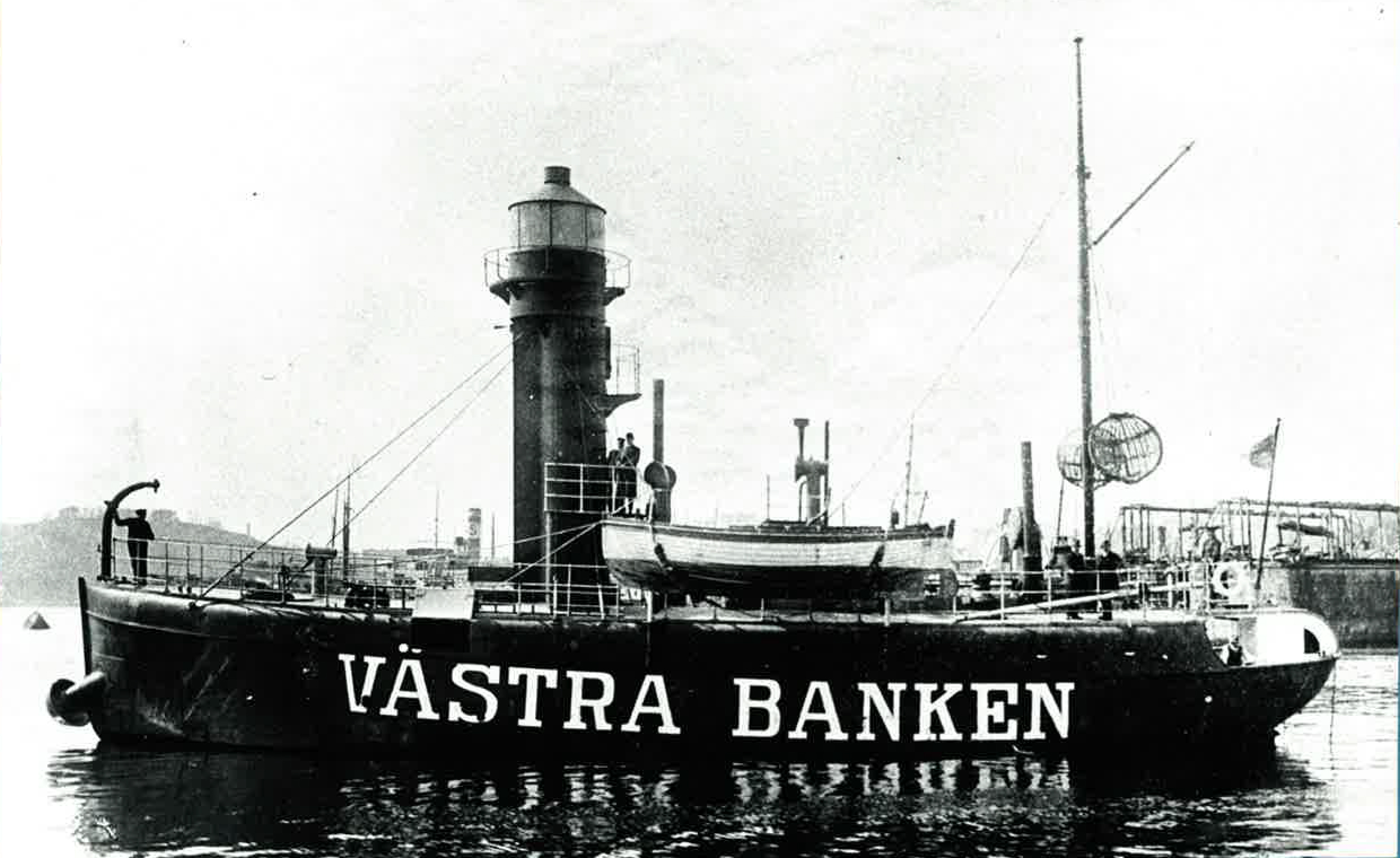
Historic image of how the Västra Banken Lightship originally looked. (Courtesy Swedish Maritime Administration)
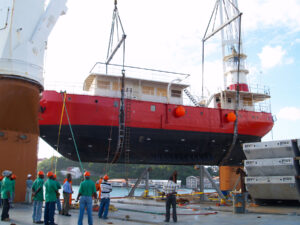
Removing the lightship from the freighter
Last year, Dieter wanted to see if he could get the almost 100-year-old engine running. Everyone wagered whether it would start and how long it would run. Bets placed, with beers in hand, sailors and friends crowded into the engine room to bear witness to the test. The first attempt to start the engine failed, but the team did not give up. After guiding the fly-wheel back to the start position and priming the fuel pump a second time, the first cylinder began chugging away. Cheers erupted in the engine room and on the top deck as the engine rumbled, and dark smoke spewed forth. Dieter believes this is one of the oldest running engines in the world.
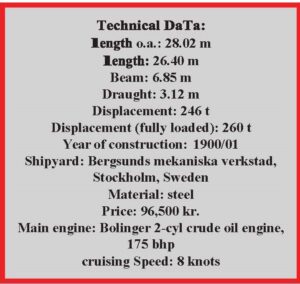
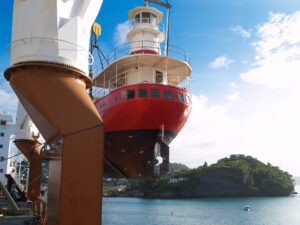
Another view of removing the lightship from the freighter
Only one of the two cylinders ran, and the cooling system wasn’t working, so they stopped the engine at 12 minutes and 47 seconds. They will do some work and will try again later this year. You can watch the engaging video of their efforts on YouTube or Le Phare Bleu’s website.
https://www.youtube.com/watch?v=hi0EV_0YSFM
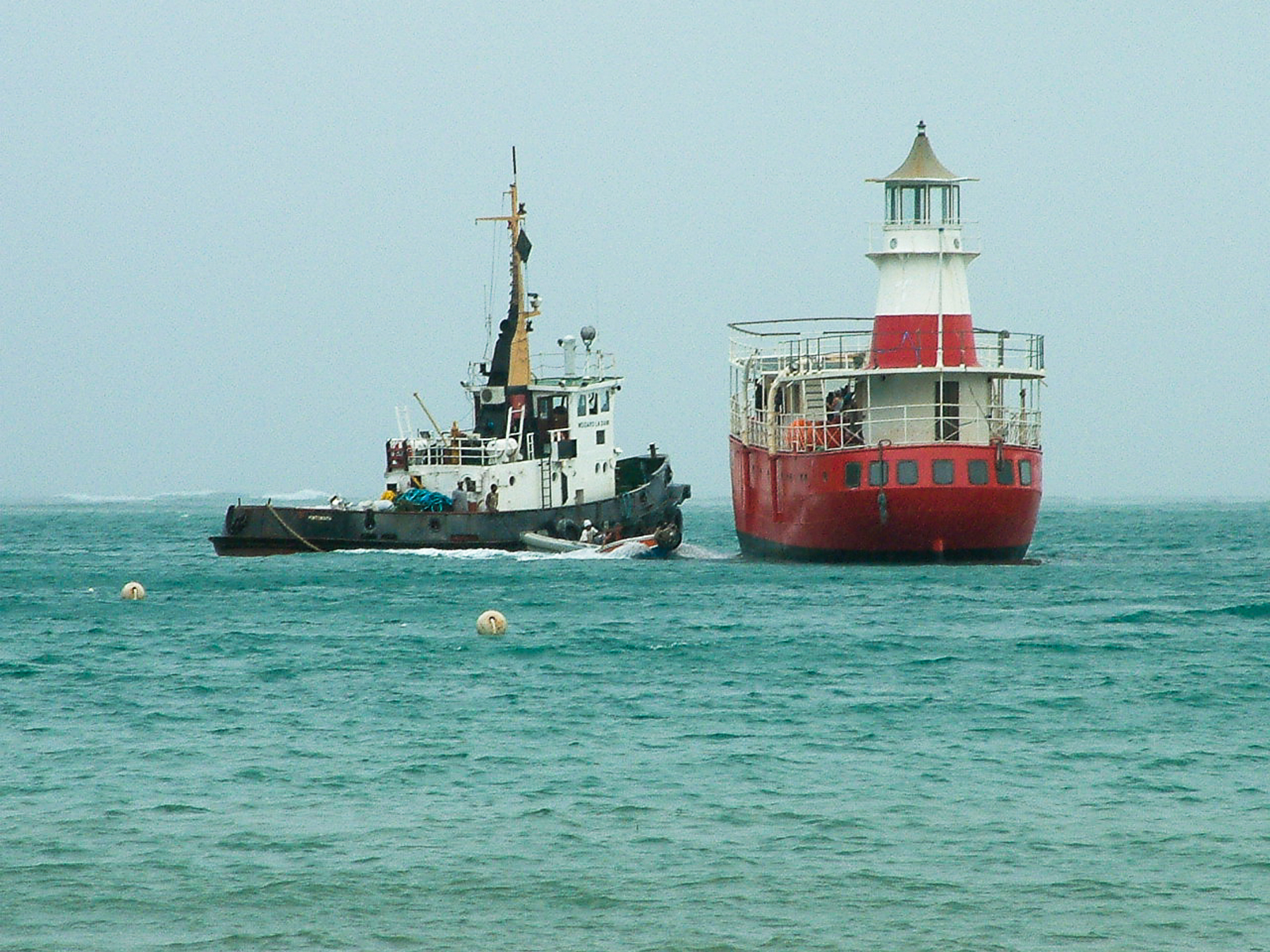
Towing the lightship from St. Georges in Grenada
The Västra Banken #23 proudly stands as a signature symbol for the resort. It surprises and delights visitors to see a Swedish lightship in Grenada. For those not knowledgeable about lightships, a series of informative panels in the lightship’s museum room teaches about lightships, keeping their history alive for new generations. Dieter’s lightship is a beacon for the resort and a tribute to the fascinating history of Swedish lightships.
(Unless otherwise noted, all photos are courtesy of Dieter Burkhalter)


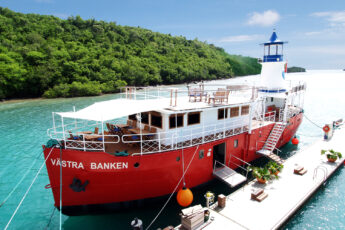



Leave a Comment